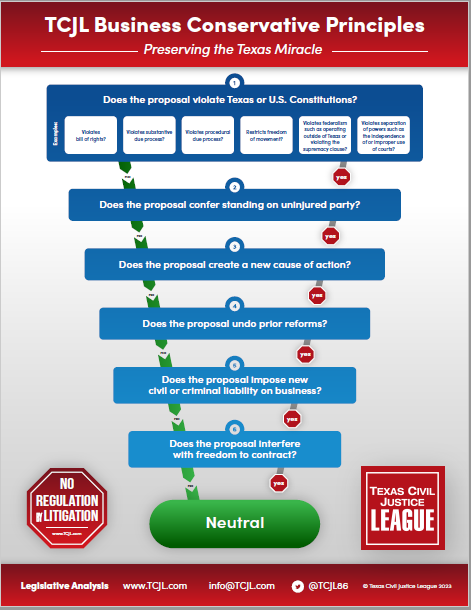 The Texas Supreme Court has granted review of a San Antonio Court of Appeals’ decision affirming a trial court order reviving a plaintiff’s already-dismissed suit against an architectural firm.
The Texas Supreme Court has granted review of a San Antonio Court of Appeals’ decision affirming a trial court order reviving a plaintiff’s already-dismissed suit against an architectural firm.
Studio E. Architecture and Interiors, Inc. v. Emily Lehmberg (No. 24-0286; granted April 4, 2025) arose from a homeowner’s 2016 lawsuit against Studio E for billing misconduct and construction defects in a remodeling project. Plaintiff neglected to file a certificate of merit as required by § 150.002, CPRC. Studio E moved to dismiss. Plaintiff filed an amended petition denying that her claims came within the statute. The trial court denied Studio E’s motion to dismiss, but the San Antonio Court of Appeals reversed and remanded to the trial court for consideration of whether “dismissal should be with or without prejudice to refiling.” Studio E sought dismissal with prejudice, but the court dismissed without prejudice. In the interim between the dismissal order and performance of the mandate on remand, Plaintiff filed a third amended petition, this time including a certificate of merit. The trial court went along with this procedure, and the court of appeals affirmed. According to the court, the dismissal without prejudice put the parties in their original presuit positions. Consequently, when Plaintiff filed her third amended position, it “operated as if she were filing her first-filed petition[.]” Since § 150.002 requires a certificate of merit to be filed with the “original pleading,” the court reasoned, Plaintiff complied with that provision.
Studio E’s petition for review focuses on two issues. First, Texas intermediate appellate courts have split over the question of whether repleading s constitutes a new lawsuit for purposes of the certificate of merit requirement. The petition points out that “[i]n theory, Texas courts agree that the COM must accompany the first petition that raises claims arising from covered professional services” (citations omitted). A majority of courts have read the statute to mandate dismissal, but if the dismissal were without prejudice, plaintiff could live to fight another day by filing a new action and including a COM with first-filed pleading in that action. Indeed, the San Antonio court of appeals had previously followed this rule in a 2013 decision. A minority of courts, however, have deviated from the statute and permitted plaintiffs to file COMs with amended pleadings in already-dismissed or nonsuited actions. These courts based their rulings on a “functional” analysis that treats filing an amended complaint like a new lawsuit, thus skirting the literal text of the statute’s insistence on the original pleading. Studio E asserts that Texas law requires refiling after dismissal without prejudice to state a new cause of action, not just the same one dressed up in an amended pleading.
The court of appeals’ decision as to Studio E’s second issue is particularly troubling for architects and engineers because in this case, it allowed Plaintiff to end run around the statute of limitations.Texas law holds that an original petition tolls limitations as long as subsequent amended petitions do not “allege a wholly new, distinct, or different transaction” (citation omitted). But when a suit is dismissed and refiled, putting the parties back to square one, limitations is based on the refiling, not the original lawsuit. SCOTX recently opined in Levinson Alcoser Assocs., L.P. v. El Pistolón II, Ltd., 670 S.W.3d 622 (Tex. 2023) that “the running of a limitations period is not tolled when a suit is dismissed and refiled. 670 S.W.3d at 631. Studio E also points to a footnote in the Court’s opinion “expressing serious doubt about whether any tolling doctrine could ever apply in a § 150.002 case.” Here Plaintiff filed her original petition in June 2016 (though it is unclear whether even the original case made it under the wire). She pleaded various claims with either two- or four-year statutes. Her third amended petition was filed in July 2019, at least five years after the last date on which her causes of action could have accrued (maybe August 2014). Obviously, the court of appeals’ decision eliminated Studio E’s limitations defense. If that decision were to become the law, according to Studio E, “any plaintiff could violate the first-filed-petition rule and indefinitely extend the limitations periods on her claims merely by filing a deficient petition within the limitations period; she could then amend it as many times as she’d like over as many years as she’d like—even if the suit was dismissed and limitations had run—simply by finally filing a COM with an amended petition.”
There is no question in our minds that the court of appeals got it wrong, and we think that the Court took the case to clear up any confusion on that point. Reading the COM statute to permit a circumvention of limitations makes no sense in terms of either the plain text of the statute or the clear legislative policy the statute enacts.












